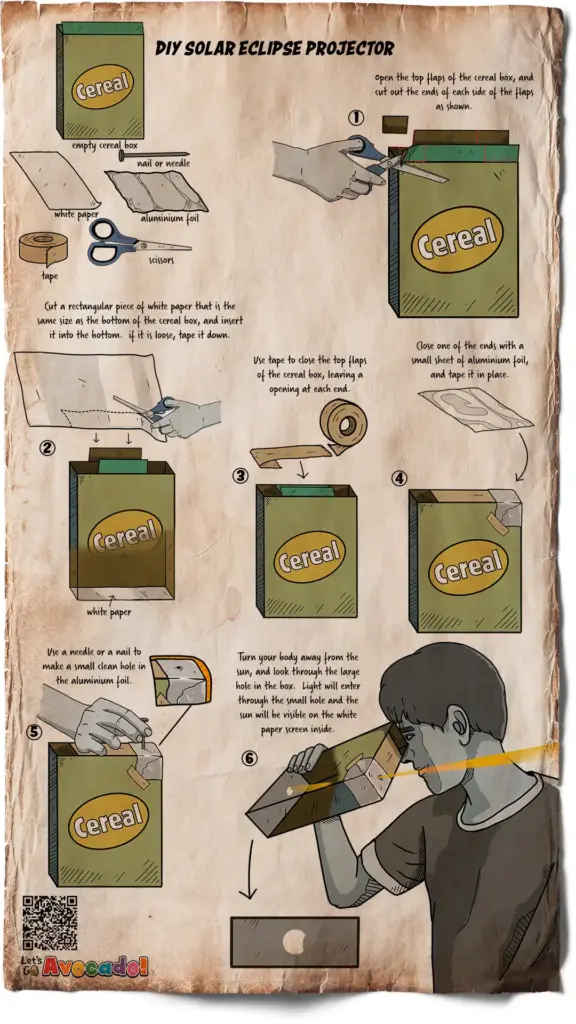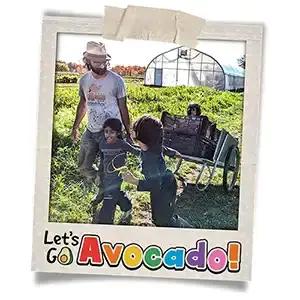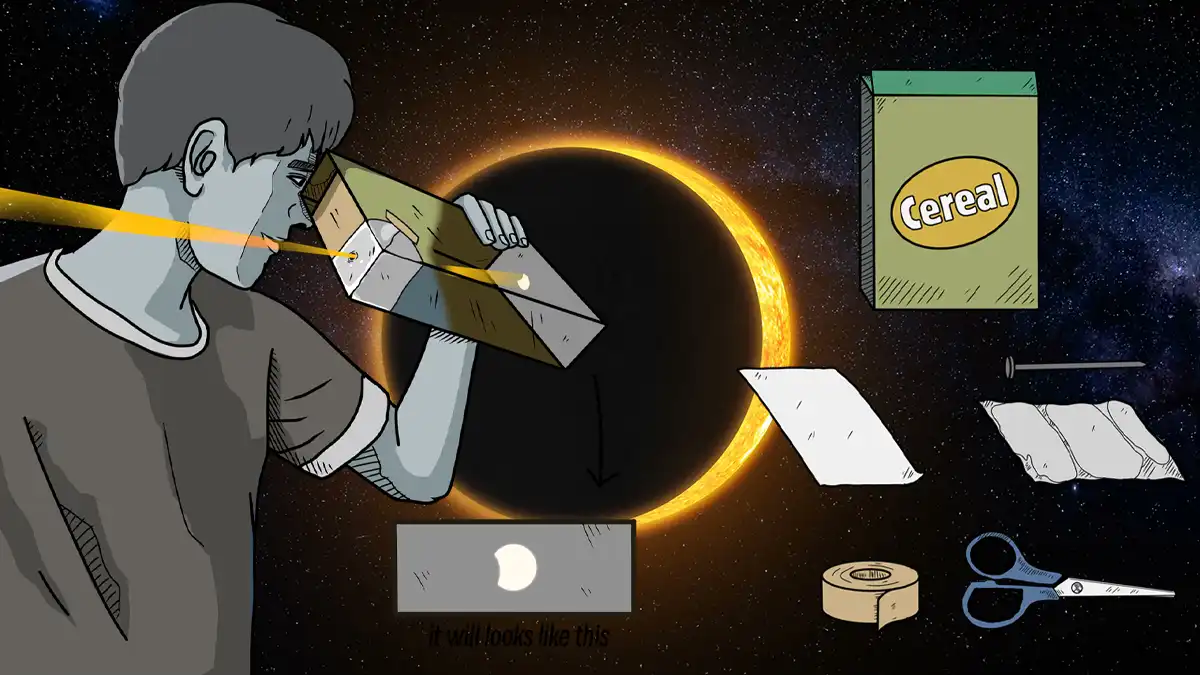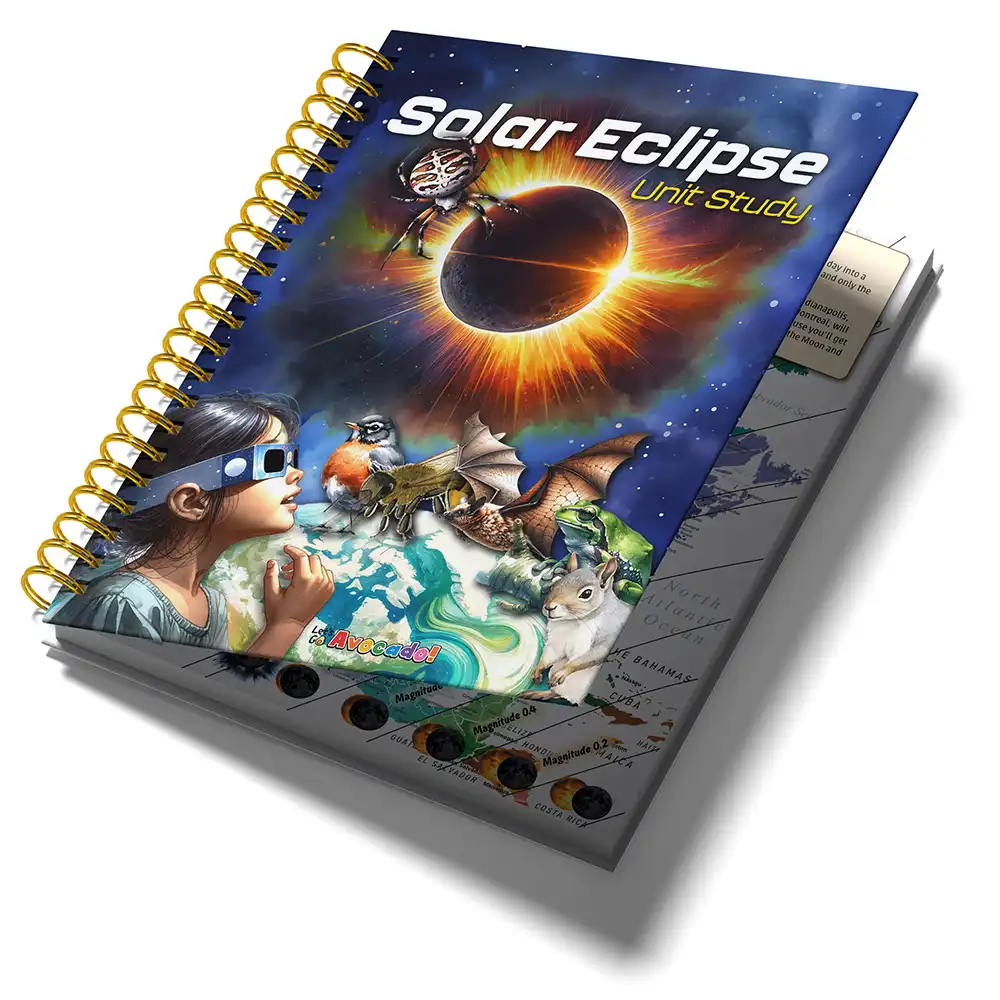This page may contain affiliate links.
Read our disclosure and privacy policy here.
Ever wanted to watch a solar eclipse safely? Well, you’re in luck! With just a cereal box, some common household items, and a bit of creativity, you can make your very own solar eclipse projector. This cool project lets you see the eclipse without looking directly at the sun, which can hurt your eyes. I’ll show you step-by-step how to transform a simple cereal box into a nifty gadget for eclipse watching. It’s easy, fun, and you’ll be amazed at what you can see with something you made yourself. Let’s get started on this awesome DIY adventure!
Table of Contents
DIY: How To Make Solar Eclipse Projector From A Cereal Box

List of Materials & Tools
Materials Required
- Cereal box
- Aluminum foil
- White paper sheet
Tools and Supplies
- Scissors
- Tape
- Nail or Pin
How to build a Solar Eclipse Projector – steps to build a simple DIY Eclipse Projector With A Cereal Box
Step 1: Prepare Your Cereal Box
Open the top flaps of your cereal box. Cut off the ends of each side of the flaps to create openings. This step prepares your box to capture light.
Step 2: Insert the Viewing Screen
Cut a piece of white paper to match the size of the cereal box’s bottom. Slide this paper inside the box, against the bottom surface. If the paper doesn’t fit snugly, use tape to secure it in place. This will serve as the screen where you’ll view the eclipse.
Step 3: Seal the Top
Close the cereal box’s top flaps and secure them with tape. Make sure to leave a small opening at each end of the box top. These openings allow light to enter the box and project onto your screen.
Step 4: Cover One End with Aluminum Foil
Take a small sheet of aluminum foil and cover one of the openings at the end of the box. Secure the foil with tape. This foil acts as your projector lens.
Step 5: Create Your Projector Lens
With a pin or nail, poke a small, clean hole in the center of the aluminum foil. This hole is critical as it allows sunlight to enter the box in a narrow beam, creating a clear projection of the eclipse on the paper screen.
Step 6: Viewing the Eclipse
To use your solar eclipse projector, stand with your back towards the sun. Look through the open end of the box, opposite the aluminum foil. The sun’s light will enter through the hole in the foil and project an image of the eclipse onto the white paper at the bottom of the box.
That’s It!
With these simple steps, you’ve turned a regular cereal box into a safe viewer for solar eclipses. This project not only offers a fun DIY activity but also provides a hands-on learning experience about the wonders of our solar system.
Tips for a Great Solar Eclipse Viewing Experience
- Adjust the box angle if needed to get the best view of the projected eclipse.
- Never look directly at the sun, even during an eclipse, without proper eye protection.
- Enjoy sharing this moment with friends and family, taking turns observing the eclipse safely.
Engaging Discussion Topics for Building a Solar Eclipse Viewer
Creating a solar eclipse viewer from a cereal box is a fantastic way to blend craft time with learning. As you and your child assemble this simple device, here are five enriching discussion topics to explore together, sparking curiosity and deepening understanding of the science and history behind solar eclipses.
How Does the Image Get Projected Inside the Box?
Can you guess how we can see the sun’s image inside our box without looking directly at it? What do you think happens to the light when it goes through the hole?
This topic delves into the basics of light and optics. Explain how the small hole in the aluminum foil acts like a pinhole camera, projecting an inverted image of the sun onto the opposite side of the box. The smaller the hole, the sharper the image will be.
Guidance for Parents: Explain that when light passes through a small opening, like the pinhole in the foil, it travels in a straight line and projects an image of whatever is in front of the hole onto a surface facing the hole, in this case, the inside of the cereal box. The pinhole acts like a lens, focusing a specific view (the sun) onto the white paper, allowing us to safely observe the eclipse.
Activity Suggestion: Use a flashlight in a dark room to show how light travels through small openings and projects onto surfaces.
The Importance of Eye Safety During Solar Eclipses
Why do you think it’s dangerous to look directly at the sun during an eclipse? What can happen to our eyes?
This is a critical safety discussion. Explain that the sun’s rays can damage the eyes, causing serious and sometimes permanent harm. A solar eclipse makes it tempting to stare at the sun, but its powerful rays can still hurt our eyes, which is why we use viewers like the one you’re making.
Guidance for Parents: Discuss the dangers of ultraviolet (UV) and infrared (IR) radiation from the sun, which can burn the retina, leading to permanent damage or blindness, a condition known as solar retinopathy. The danger is greater during an eclipse because the dim light doesn’t trigger our natural response to squint or look away, leading to more prolonged exposure.
History of the Pinhole Projector
How do you think people watched solar eclipses before we had cameras and telescopes?
Talk about the ancient and widespread use of pinhole projectors to safely view solar eclipses. This method has been utilized for centuries across various cultures, showing the human fascination with celestial events.
Guidance for Parents: Share stories or illustrations from history showing how different cultures observed solar eclipses using pinhole projectors or similar methods. This technology is not new but a fundamental way humans have safely observed the sun for centuries.
Why Do Solar Eclipses Happen?
What causes a solar eclipse? Do you think they happen often?
Discuss the astronomical reasons behind solar eclipses, including the alignment of the Earth, moon, and sun. Explain the difference between partial, total, and annular eclipses. You can also touch on how the moon’s shadow casts on the Earth and why eclipses are not a monthly event.
Guidance for Parents: Simplify the astronomical mechanics behind solar eclipses: The moon moves between the Earth and the sun, casting a shadow on the Earth. The rarity of eclipses is due to the specific alignment needed and the varying orbits of Earth and the moon.
Activity Suggestion: Use balls to represent the Earth, moon, and sun, showing how their alignment causes eclipses. Highlight the differences in shadow paths for partial, total, and annular eclipses.
Creative Uses for Cereal Boxes
Besides making an eclipse viewer, what else do you think we could create with a cereal box? Why is reusing materials like this good for the environment?
Encourage creativity and environmental awareness by brainstorming other projects that can repurpose cereal boxes and other household materials. Discuss the importance of recycling and reusing, highlighting how creativity can reduce waste.
Guidance for Parents: Encourage thinking outside the box (pun intended) about recycling and reusing everyday materials. Discuss how reusing materials not only saves money but also benefits the environment by reducing waste. Brainstorm together on projects like making a bird feeder, a puppet theater, or custom drawer organizers from old cereal boxes. Highlight the importance of creativity and resourcefulness in solving problems and making new things.

There’s a lot to explore right where we are, in our own neighborhoods and backyards! Join us while we get off the couch and explore the everyday wonders of nature, science, space, engineering, art, and anything else we stumble upon during on our adventures.




